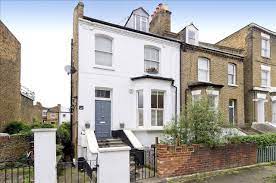Stamp Duty for First-Time Buyers in the UK: A Complete Guide
Buying your first home is an exciting milestone, but it's important to understand the costs involved, including Stamp Duty Land Tax (SDLT). Fortunately, first-time buyers in the UK may be eligible for stamp duty relief, which can significantly reduce the amount of tax they need to pay when purchasing a property.
This guide explains how stamp duty works for first-time buyers, what reliefs are available, and how much you can expect to pay when buying your first home.
What is Stamp Duty?
Stamp Duty Land Tax (SDLT) is a tax paid when you buy property or land in England and Northern Ireland over a certain price threshold. In Scotland, this tax is known as Land and Buildings Transaction Tax (LBTT), and in Wales, it's called Land Transaction Tax (LTT).
The amount of stamp duty you pay depends on the purchase price of the property and whether you’re a first-time buyer, a homeowner, or an investor. First-time buyers in England and Northern Ireland benefit from special relief, which can reduce or eliminate the amount of stamp duty they need to pay.
What is First-Time Buyer Stamp Duty Relief?
To help first-time buyers get onto the property ladder, the UK government introduced stamp duty relief for eligible buyers purchasing their first home. This relief allows first-time buyers to pay no stamp duty or reduced rates on properties up to a certain value.
Eligibility for First-Time Buyer Stamp Duty Relief
To qualify for first-time buyer stamp duty relief, you must meet the following criteria:
-
You must be a first-time buyer: This means you (and anyone else you're buying the property with) must never have owned a residential property in the UK or anywhere else in the world. This includes freehold or leasehold ownership, and even partial ownership through shared ownership schemes.
-
The property must be your main residence: The property you’re purchasing must be intended as your primary home and not as a buy-to-let or investment property.
-
The purchase price must not exceed £625,000: First-time buyer relief applies only to properties worth £625,000 or less. If the property is worth more than £625,000, you will not be eligible for any relief and will pay standard stamp duty rates.
Stamp Duty Rates for First-Time Buyers
For first-time buyers, stamp duty is calculated as follows:
- Up to £425,000: No stamp duty is payable on the first £425,000 of the property’s purchase price.
- £425,001 to £625,000: If the property’s price falls between £425,001 and £625,000, you will pay 5% stamp duty on the portion of the purchase price between £425,001 and £625,000.
- Above £625,000: If the property price exceeds £625,000, no first-time buyer relief applies, and you’ll pay the standard stamp duty rates on the full purchase price.
Here’s a breakdown of how stamp duty is calculated for first-time buyers:
- Properties up to £425,000: No stamp duty is payable.
- Properties between £425,001 and £625,000: 5% stamp duty is due on the portion above £425,000.
- Properties over £625,000: Standard stamp duty rates apply, and no first-time buyer relief is available.
Example: How Much Stamp Duty Will I Pay as a First-Time Buyer?
Let’s look at a few examples to understand how first-time buyer stamp duty relief works:
-
Property priced at £350,000:
- No stamp duty is payable because the property is below the £425,000 threshold.
-
Property priced at £500,000:
- No stamp duty is due on the first £425,000.
- Stamp duty at 5% is payable on the remaining £75,000 (£500,000 - £425,000).
- Stamp duty due: £75,000 x 5% = £3,750.
-
Property priced at £700,000:
- Since the property is over £625,000, no first-time buyer relief is available.
- Standard stamp duty rates apply:
- 0% on the first £250,000.
- 5% on the portion between £250,001 and £925,000.
- Stamp duty due: £250,000 x 0% + £450,000 x 5% = £22,500.
Standard Stamp Duty Rates (England and Northern Ireland)
For properties that don’t qualify for first-time buyer relief (such as those over £625,000 or purchased as investments), the standard stamp duty rates are:
- Up to £250,000: 0%
- £250,001 to £925,000: 5%
- £925,001 to £1.5 million: 10%
- Above £1.5 million: 12%
How to Claim First-Time Buyer Stamp Duty Relief
When you buy your first property, your conveyancer or solicitor will handle the process of filing your Stamp Duty Land Tax return and ensuring that you claim the appropriate relief. They will calculate the stamp duty based on your property’s purchase price and ensure that any applicable first-time buyer relief is applied before you pay.
It’s important to work with a solicitor who understands the rules and can confirm your eligibility for first-time buyer relief.
Other Costs to Consider
While stamp duty relief is a significant benefit, it’s important to remember that there are other costs involved in buying a home, such as:
- Deposit: Typically, first-time buyers need a deposit of at least 5% to 10% of the property’s value.
- Solicitor or conveyancer fees: Legal fees for the property purchase.
- Mortgage arrangement fees: Costs related to setting up your mortgage.
- Survey fees: Costs for a property survey or valuation.
Conclusion
First-time buyers in the UK can benefit from stamp duty relief, making the process of purchasing a home more affordable. If you’re buying a property worth up to £625,000, you may be eligible for reduced or no stamp duty, significantly lowering your upfront costs.
To ensure you qualify for the relief and accurately calculate how much you’ll need to pay, work with an experienced solicitor who can handle the process and provide expert advice.
If you're a first-time buyer and need guidance on your property purchase, contact a property expert or solicitor to ensure you get the most out of your stamp duty relief and avoid any costly mistakes.











